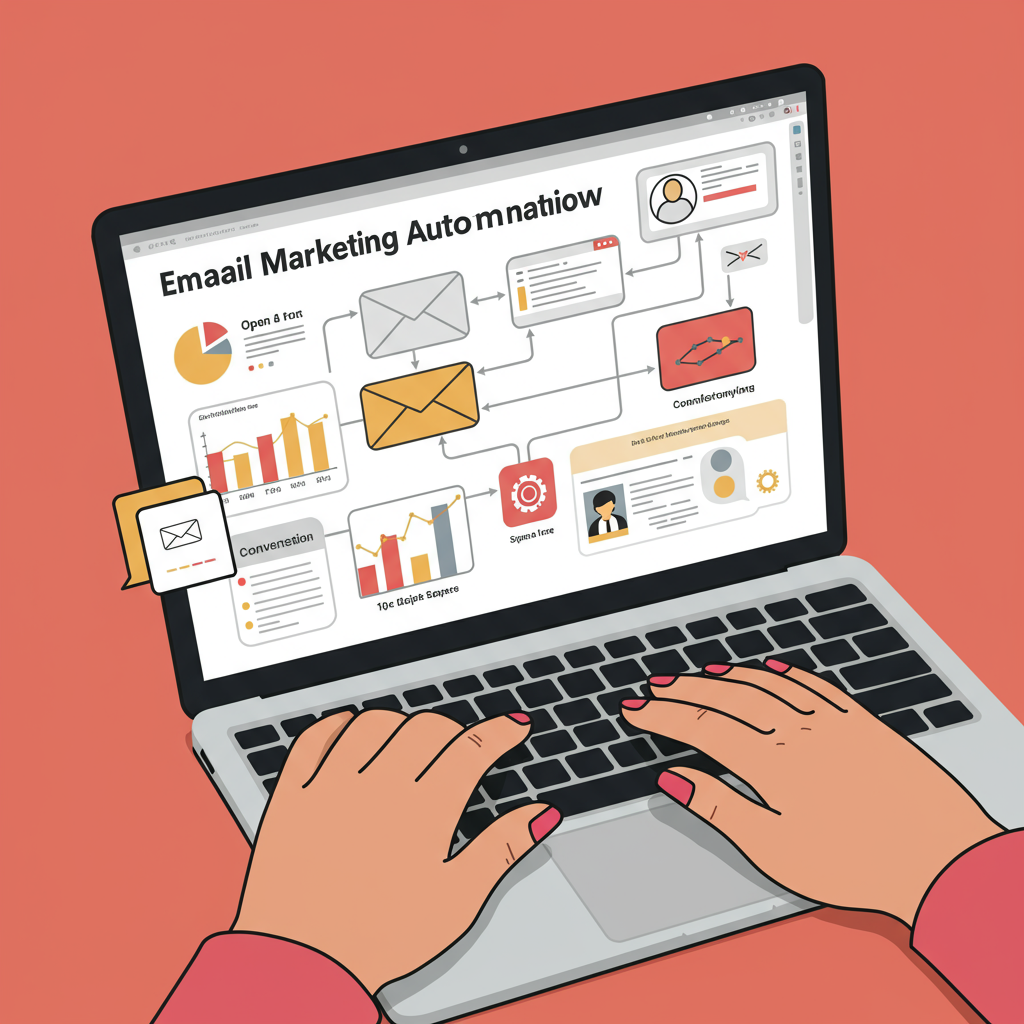Transforming your Shopify store’s customer engagement and sales with smart email workflows.
As a Shopify merchant, I’ve learned that simply having a great product isn’t enough. In today’s competitive e-commerce landscape, connecting with your customers on a deeper, more personal level is absolutely crucial for sustained growth.
This is where email automation steps in, and frankly, it’s been a game-changer for my own store. It allows me to communicate effectively, consistently, and at scale, without having to manually send every single message.
I’ve seen firsthand how powerful automated email sequences can be, from welcoming new subscribers to recovering abandoned carts and nurturing long-term customer relationships.
In this comprehensive guide, I want to share my insights and strategies on how you can leverage Shopify email automation tools to boost your sales, improve customer loyalty, and save valuable time.
So, what exactly is email automation in the context of a Shopify store? For me, it’s about setting up predefined email sequences that are triggered by specific customer actions or events.
Think of it as having a tireless, always-on sales and customer service assistant working for you 24/7. It’s not just about sending bulk newsletters; it’s about sending the *right* message to the *right* person at the *right* time.
The benefits I’ve personally experienced are manifold: significant time savings, enhanced personalization, increased conversion rates, and a noticeable improvement in customer retention.
It allows me to focus on other aspects of my business, knowing that my email communications are running smoothly in the background.
Let’s dive into some of the essential email automation flows that I believe every Shopify merchant should implement.
First up, the Welcome Series. This is your first impression with a new subscriber, and it’s incredibly important. I typically set up a sequence of 2-4 emails.
The first email confirms their subscription and offers a small discount or free shipping to encourage a first purchase. Subsequent emails can introduce my brand story, highlight best-selling products, or share valuable content related to my niche.
I always make sure these emails are warm, inviting, and clearly convey my brand’s unique value proposition.
Next, and perhaps the most critical for immediate revenue recovery, is the Abandoned Cart sequence. I’ve found that a multi-email approach works best here.
The first email goes out within an hour, a gentle reminder. The second, after 24 hours, might include a small incentive like free shipping or a percentage off.
A third email, sent after 48-72 hours, can introduce a sense of urgency or highlight customer testimonials. This flow alone has recovered a significant portion of lost sales for me.
Post-Purchase Follow-up is another area where automation shines. Beyond the standard order confirmation and shipping updates, I use this to build loyalty.
I send an email a few days after delivery, asking for a product review. Later, I might send a cross-sell or upsell email based on their purchase, suggesting complementary products.
A simple ‘thank you’ email, perhaps with a loyalty program invitation, also goes a long way in making customers feel valued.
Win-Back Campaigns are essential for re-engaging inactive customers. I identify customers who haven’t purchased in a certain period (e.g., 60-90 days) and send them a series of emails.
These emails might highlight new arrivals, offer an exclusive discount, or simply remind them of the value my products offer. It’s about rekindling that connection.
Browse Abandonment emails are a bit more advanced but highly effective. If a customer views a product but doesn’t add it to their cart, I can send an automated email reminding them of the item.
Sometimes, I’ll even include similar product recommendations to give them more options. This captures interest before it fades.
Don’t forget Birthday or Anniversary emails! Collecting this data allows me to send a personalized message with a special offer on their special day. It’s a fantastic way to show appreciation and drive repeat purchases.
Effective segmentation is the backbone of successful email automation. I segment my audience based on purchase history, browsing behavior, engagement levels, and demographics.
This allows me to send highly relevant and personalized messages, which significantly increases open rates, click-through rates, and ultimately, conversions.
Choosing the right email automation tool for your Shopify store is a crucial decision. I look for robust Shopify integration, an intuitive drag-and-drop email builder, and powerful automation workflow capabilities.
Strong segmentation features, detailed analytics and reporting, and responsive customer support are also non-negotiable for me. Pricing models vary, so I always consider my budget and projected growth.
I’ve found that investing in a good tool pays for itself many times over through increased sales and efficiency.
When setting up your automations, always remember best practices: craft compelling subject lines, ensure your emails are mobile-responsive, and include clear calls to action.
A/B test different elements – subject lines, email copy, images, and CTAs – to continuously optimize your performance. Personalization goes beyond just using a customer’s name; it’s about tailoring content to their interests.
Finally, always maintain good list hygiene by regularly cleaning out unengaged subscribers, and ensure full compliance with data privacy regulations like GDPR and CAN-SPAM.
Measuring the success of your email automation efforts is vital. I closely monitor key metrics such as open rates, click-through rates, conversion rates, and revenue generated per email.
These metrics help me understand what’s working and where I need to make adjustments. Email marketing is an iterative process; continuous optimization is key.
In conclusion, implementing email automation for your Shopify store isn’t just a nice-to-have; it’s a fundamental strategy for sustainable growth and building lasting customer relationships.
It empowers you to deliver timely, relevant, and personalized messages that drive sales and foster loyalty, all while freeing up your valuable time.
I truly believe that mastering email automation is one of the most impactful things you can do for your e-commerce business.
What are your thoughts on email automation for Shopify stores? Have you found it as transformative as I have?






